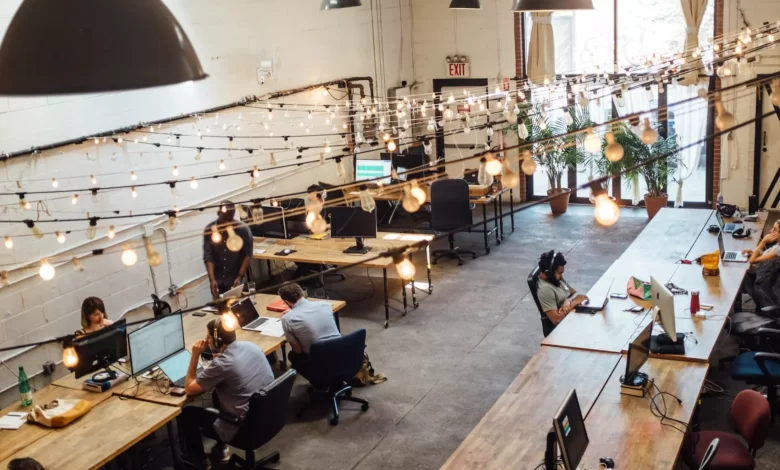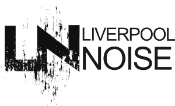
The Hybrid Advantage: How Companies Can Create A Workspace For Modern Success
Workspaces are undergoing a remarkable transformation, with the traditional office model giving way to something far more suited to our current era. This is the age of the hybrid workspace, a concept that marries the independence of remote work with the collaborative energy of conventional office environments.
The move towards hybrid setups is born from an understanding that work does not have to be confined to a single format. It celebrates the diversity of working styles and recognises that customisation is crucial for maximising potential. In this evolving workspace scenario, the aim is to craft spaces that cater to various work preferences. Whether you find your rhythm amidst the lively hum of an office or in the calm of your home, hybrid workspaces are designed to offer the best of both realms.
Finding Harmony Between Flexibility And Order
In the hybrid workspace, the art lies in balancing personal freedom with professional discipline. Picture a work life where you have the liberty to choose your work setting, aligning it with your daily needs and tasks. This isn’t just about picking a spot to work, it’s about crafting a work style that is as dynamic as you are.
Having the option to work from different locations – perhaps a quiet space for focused tasks or a larger area for the vibrant energy of an office for team brainstorming – can do wonders for your creativity and productivity. This flexibility allows you to match your environment with your work mood or task, breaking free from the monotony of a fixed workspace.
For flexibility with the office space, look into office pods from Furnify. These indoor meeting office pods create a space that is isolated by sound, but still accessible. This can be a space for meeting or for focused work, and combine the best aspects of working from home and being in-house. The flexibility of office pods and the space they provide encourage more in-house productivity and offer a middle ground for hybrid workers in the office that blends the benefits of both styles of space. They are a truly hybrid environment.
Maintaining a sense of structure between in-house and hybrid teams is crucial. It is what keeps you all in sync, even when you are not physically together. Regular virtual catch-ups, team meetings, and shared digital workspaces become the glue that holds everyone together, ensuring that collective goals are never out of sight. This harmonious blend of personal choice and team unity is what makes hybrid workspaces not just functional, but also enriching for your work-life balance.
Optimising Office Furniture For Hybrid Workspaces
The choice of furniture, whether for your home office or the corporate space, plays a crucial role in shaping your work experience. For your home setup, selecting the right furniture is key to creating a space where comfort meets productivity. A desk that fits just right into your space and a chair that supports your posture can transform your work-from-home experience. It is about choosing pieces that suit your personal style and work needs, ensuring you can stay productive and comfortable throughout the day.
In the office, furniture needs to be flexible and adaptable, ready to suit various work scenarios. Modular pieces that can be rearranged for team collaborations or solo tasks are ideal. Think about creating spaces with comfortable seating and desks that adjust to different needs, making the office a versatile environment for every member of your team.
Dr Matthew Davis is an organisational psychologist who assesses how organisations can use systems within their physical space and views the technology, the people, and the culture, as a joint design problem. “Our individual preferences on ways of working don’t exist in isolation. So, if colleagues decide to be in the office more, this is likely to influence how you work and interact and how tasks are undertaken. Flexibility has to be part of this as we haven’t learnt how effective hybrid working works yet. What we haven’t really had is a properly designed hybrid workplace where we’ve really tried to think with a level of sophistication about how we do those things, or how we make the best of what we have.”
The essence of hybrid working office design is not just in the look of the furniture but in its ability to create a supportive work environment. Whether at home or in the office, the right furniture setup is integral to building a workspace that not only looks good but also aligns perfectly with your work-life needs.
Elevating Morale And Productivity In A Hybrid Setting
Boosting your team’s morale and productivity becomes a unique challenge, yet it is one that offers rewarding outcomes. The key is to understand that your team’s motivation and efficiency stem from more than just their physical work environment. It is all about the culture and practices that you cultivate in this flexible workspace.
Encouraging open communication is vital. When your team members feel heard and valued, regardless of their location, it fosters a sense of belonging and commitment. Regular team meetings and one-on-one check-ins can help maintain this connection, ensuring everyone feels included and part of the collective mission.
Another aspect is acknowledging and accommodating different working styles. In a hybrid setup, some of your team might thrive in the quiet of home, while others draw energy from the buzz of an office. Recognising and supporting these preferences can lead to a significant boost in overall productivity and job satisfaction. By nurturing these elements in your hybrid workspace, you not only enhance productivity but also build a work culture that’s resilient, inclusive, and adaptable to the changing needs of your team.
Innovative Approaches In Hybrid Workspace Management
In the hybrid workspace, innovation isn’t just a buzzword; it’s a necessity for your team’s success and satisfaction. This new work environment demands creative solutions to bridge the gap between remote and in-office work. Abs Hassanali, a Communications Expert at Integral Ad Science, says engagement can be a common problem when addressing a remote and in-house team simultaneously, “the secret to staying engaged during these calls is treating both attendees one and the same. Ensure audio and video set-ups cater to both groups, but beyond that, I don’t think they should be treated differently”. The challenges managing a hybrid team pose to communication are not limited to meetings, but also collaboration and project management.
Using collaborative tools and platforms can make a world of difference in how your team communicates and works together. These tools should not only facilitate smooth communication but also ensure that resources are easily accessible, regardless of location. Another aspect is redefining meeting cultures. In a hybrid setting, meetings should be more than routine catch-ups; they should be productive and inclusive sessions that value everyone’s time and input.
This might mean rethinking meeting frequencies, durations, and formats to ensure they are effective for both remote and in-office team members. The environment should be adaptable for those in the office, catering to various needs and tasks. This could mean flexible seating arrangements, quiet zones for focused work, and collaborative spaces for team activities.
Building A Workspace Where Everyone Belongs
In hybrid workspaces, it is essential to create a work environment that is inclusive and adaptable, ensuring every team member feels valued and integral, no matter their location. This approach is about more than just physical spaces.
Ensuring inclusivity means making certain that both remote and office-based team members have equal access to information and opportunities. It’s about adopting practices that allow seamless communication and active participation for everyone. This could involve using tools that enable easy collaboration or scheduling meetings that consider different time zones.
Being adaptable is just as critical. Stay open to evolving work methods and be willing to tweak strategies to fit the hybrid model better. This might include rethinking work processes for greater efficiency or welcoming team feedback on improving the work environment.
As we round off this discussion, it is unmistakable that the hybrid workspace is not just a fleeting trend, but the groundwork for the future of working. This blend of remote and office-based work is transforming our perceptions of productivity, teamwork, and employee contentment.
Achieving a thriving hybrid workspace is about striking a harmonious balance. It involves merging the autonomy of working from home with the structured environment of the office, fostering an environment of inclusivity, and ensuring your space is equipped with the necessary tools and furnishings. It is about crafting a workspace where every team member, regardless of their location, can reach their full potential.
The next steps are yours to take. Reflect on how you can integrate these strategies into your workspace. Whether it’s reimagining your office design, experimenting with new communication technologies, or starting conversations about flexible working models, each action is a step towards a more adaptable and productive work environment.
The time is ripe to embrace this evolution. As you adapt to this hybrid model, watch your team and business grow and prosper. The future of work is hybrid, and it is an exciting time to be part of this change. Are you ready to make the leap?






